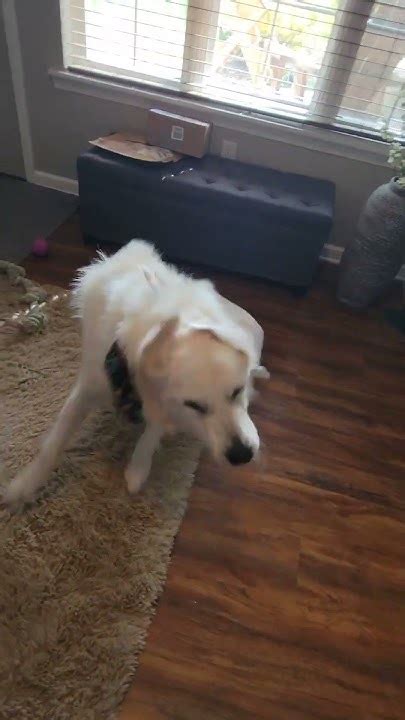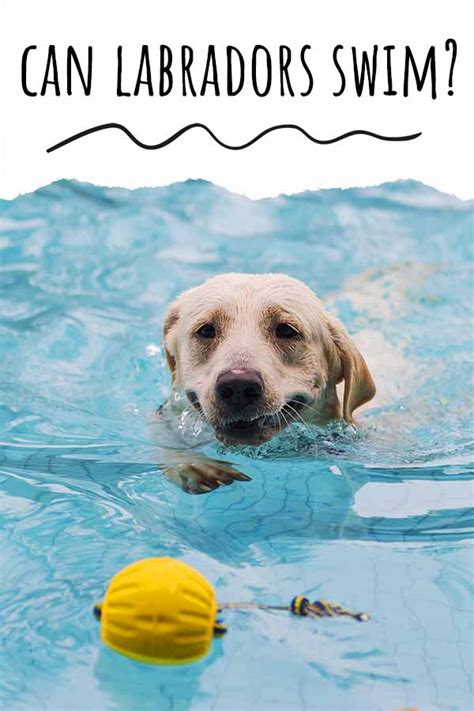
A golden retriever puppy’s exuberant burst of energy, known as “zoomies,” ended abruptly when he knocked himself unconscious while running in circles in his owner’s lap. The incident, captured in a now-viral video, highlights the boundless enthusiasm and occasional clumsiness of young dogs.
A video posted by the dog’s owner, showcasing the puppy’s unbridled joy, quickly gained traction on social media, amassing millions of views and prompting reactions from pet lovers worldwide. The clip depicts the golden retriever, overcome with a sudden surge of energy, engaging in a frenetic display of rapid spinning and playful nips, all while nestled in his owner’s lap. However, the joyous episode took an unexpected turn when the puppy, seemingly losing his balance, collided with his own head, resulting in a momentary loss of consciousness.
“He literally knocked himself out,” the owner stated in the video’s caption, adding a touch of humor to the concerning situation. He further clarified that the puppy quickly regained consciousness and was unharmed, emphasizing that the incident was more comical than alarming. The owner further confirmed that the puppy, named Louie, was back to his normal, playful self shortly after the incident. “He was totally fine literally seconds after, back to his normal self,” the owner explained.
Veterinarians explain that zoomies, also known as Frenetic Random Activity Periods (FRAPs), are normal and healthy bursts of energy, particularly common in puppies and young dogs. They are often triggered by excitement, pent-up energy, or even relief after a period of confinement. While generally harmless, it is advisable to ensure the dog has ample space to run and play in a safe environment to minimize the risk of injury.
The incident serves as a reminder of the importance of understanding canine behavior and providing a safe environment for pets to express their natural instincts. The video’s popularity underscores the universal appeal of adorable animal antics and the shared experiences of pet ownership.
Understanding Zoomies and Canine Behavior
Zoomies, or Frenetic Random Activity Periods (FRAPs), are characterized by sudden bursts of energy, often involving frantic running, spinning, and playful behaviors. These episodes are commonly observed in puppies and young dogs, but can also occur in adult dogs. Several factors can trigger zoomies, including:
- Excitement: The anticipation of a walk, playtime, or the arrival of a loved one can trigger a burst of energy.
- Pent-Up Energy: Dogs who have been confined for extended periods may experience a build-up of energy that is released in a zoomie episode.
- Relief: After a bath, grooming session, or a period of anxiety, dogs may engage in zoomies as a way to release tension and celebrate their newfound freedom.
- Playfulness: Zoomies can be a form of play, particularly among puppies, who use them to explore their environment and interact with their surroundings.
While zoomies are generally harmless, it is important to ensure that the dog has a safe environment to express this behavior. This includes providing ample space to run and play, removing any potential hazards, and supervising the dog to prevent injuries. In the case of Louie, the puppy’s zoomies occurred in his owner’s lap, which, while seemingly comfortable, proved to be a confined space that ultimately contributed to the unfortunate collision.
Veterinary Perspective on Zoomies
Veterinarians often reassure pet owners that zoomies are a normal and healthy part of canine behavior. However, they also emphasize the importance of responsible pet ownership and providing a safe environment for dogs to express their energy.
“Zoomies are a perfectly normal behavior, especially in young dogs,” explains Dr. Emily Carter, a veterinarian specializing in canine behavior. “They are a way for dogs to release pent-up energy and express their excitement. However, it’s important to ensure that they have enough space to run and play safely. Owners should also be aware of potential hazards in the environment and take steps to minimize the risk of injury.”
Dr. Carter advises pet owners to consult with a veterinarian if they are concerned about the frequency, intensity, or context of their dog’s zoomies. In some cases, excessive zoomies may be a sign of underlying medical or behavioral issues. For example, dogs with anxiety or hyperactivity may exhibit more frequent or intense zoomies.
The Impact of Social Media on Pet Stories
The viral video of Louie the golden retriever puppy highlights the significant impact of social media on pet stories. Platforms like TikTok, Instagram, and YouTube have become popular outlets for pet owners to share adorable and humorous content, often featuring their furry companions. These videos can quickly gain widespread attention, generating millions of views and fostering a sense of community among pet lovers.
The appeal of pet videos lies in their ability to evoke positive emotions, such as joy, amusement, and affection. Animals are often seen as innocent and playful creatures, and their antics can provide a welcome distraction from the stresses of daily life. Furthermore, pet videos can serve as a reminder of the importance of companionship, loyalty, and unconditional love.
However, the popularity of pet videos also raises ethical considerations. It is important to ensure that the animals featured in these videos are treated with respect and care, and that their well-being is not compromised for the sake of entertainment. Pet owners should also be mindful of the potential risks of sharing personal information online, such as their location or contact details.
Golden Retrievers: A Breed Known for Energy and Playfulness
Golden Retrievers are renowned for their friendly, intelligent, and energetic personalities. They are consistently ranked among the most popular dog breeds in the world, prized for their gentle nature, trainability, and loyalty. Golden Retrievers are originally bred as retrieving dogs for hunters, and they retain a strong instinct to retrieve and carry objects in their mouths.
Golden Retrievers require a significant amount of exercise to stay healthy and happy. They thrive on activities such as running, swimming, fetching, and playing with other dogs. Without sufficient exercise, they can become bored, restless, and prone to destructive behaviors.
Puppies, in particular, are known for their boundless energy and playful antics. They often engage in zoomies as a way to burn off excess energy and explore their surroundings. Golden Retriever puppies also require a significant amount of socialization and training to develop into well-adjusted adults.
Preventing Injuries During Zoomies
While zoomies are generally harmless, there are steps that pet owners can take to minimize the risk of injury:
- Provide a Safe Environment: Ensure that the dog has ample space to run and play in a safe environment, free from obstacles and hazards.
- Supervise the Dog: Supervise the dog during zoomie episodes to prevent them from running into objects or injuring themselves.
- Choose Appropriate Surfaces: Avoid allowing the dog to run on slippery surfaces, such as tile or hardwood floors, which can increase the risk of slips and falls.
- Consider Dog-Friendly Spaces: Opt for grassy areas, parks, or dog runs where the dog can have adequate space to run and play.
- Redirect Energy: If the zoomies occur indoors, try to redirect the dog’s energy by engaging them in a game of fetch or tug-of-war.
- Training Commands: Train the dog to respond to commands such as “stop” or “down” to help control their behavior during zoomie episodes.
- Monitor for Signs of Fatigue: Watch for signs of fatigue or overheating, and provide the dog with water and rest as needed.
In Louie’s case, the confined space of his owner’s lap contributed to his injury. A larger, open area would have allowed him to express his energy without the risk of collision.
Expert Opinions on Canine Safety
Animal behaviorists emphasize the importance of understanding a dog’s body language and recognizing potential hazards in their environment. They also recommend providing dogs with plenty of mental and physical stimulation to prevent boredom and reduce the likelihood of destructive behaviors.
“It’s essential to understand that dogs communicate through body language,” explains Sarah Johnson, a certified animal behaviorist. “By learning to read your dog’s signals, you can anticipate their needs and prevent potential problems. For example, if you notice that your dog is becoming restless or agitated, you can redirect their energy by engaging them in a training exercise or taking them for a walk.”
Johnson also advises pet owners to be proactive in creating a safe environment for their dogs. This includes removing potential hazards, such as toxic plants, cleaning supplies, and electrical cords. It also means providing dogs with plenty of opportunities to exercise and socialize, which can help to reduce stress and improve their overall well-being.
Alternatives to Indoor Zoomies
While zoomies are a natural behavior, encouraging them indoors can sometimes lead to accidents and damage. Here are some alternatives to help your dog release energy in a safer and more controlled way:
- Structured Playtime: Engage in structured play sessions with your dog, such as fetch, tug-of-war, or frisbee. These activities can provide physical and mental stimulation and help to burn off excess energy.
- Agility Training: Agility training is a fun and challenging activity that can help to improve your dog’s coordination, obedience, and confidence. It involves guiding your dog through a series of obstacles, such as jumps, tunnels, and weave poles.
- Obedience Training: Obedience training can help to teach your dog basic commands, such as “sit,” “stay,” “come,” and “down.” This can improve communication and control, and make it easier to manage your dog’s behavior.
- Dog Parks: Dog parks provide a safe and supervised environment for dogs to socialize and play with other dogs. They are a great way to burn off energy and satisfy a dog’s social needs.
- Hiking: Hiking is a great way to exercise your dog and explore the outdoors. Choose trails that are appropriate for your dog’s fitness level and be sure to bring plenty of water.
- Puzzle Toys: Puzzle toys are designed to challenge a dog’s mind and keep them entertained. They can be filled with treats or kibble, and the dog has to figure out how to access the food.
The Importance of Responsible Pet Ownership
The story of Louie the golden retriever puppy serves as a reminder of the importance of responsible pet ownership. This includes providing pets with proper nutrition, exercise, and veterinary care. It also means creating a safe and stimulating environment, and understanding their behavioral needs.
Responsible pet owners are also aware of the potential risks associated with pet ownership, such as injuries, illnesses, and behavioral problems. They take steps to minimize these risks by providing their pets with proper training, socialization, and supervision.
Ultimately, responsible pet ownership is about providing animals with a loving and caring home, and ensuring that their well-being is always a top priority. The owner in this story, while initially surprised by the incident, quickly ensured Louie’s safety and shared the experience to educate others. This highlights a commitment to responsible pet ownership and sharing valuable insights with the wider community.
Long-Term Implications and Considerations
While Louie’s incident appears to have been a one-time event with no lasting harm, it raises some broader questions about the long-term effects of such incidents, especially if they were to occur repeatedly. Even seemingly minor head trauma can have cumulative effects over time.
Veterinarians advise that if a dog experiences repeated head trauma, even if the symptoms appear to be mild, it is crucial to seek veterinary attention. Repeated concussions, for example, could potentially lead to neurological issues later in life.
Furthermore, the incident highlights the importance of considering the size and breed of the dog when providing them with play spaces. Smaller dogs, or dogs with certain predispositions to joint or bone issues, may be more susceptible to injury during zoomies. Providing appropriate surfaces and monitoring their activity levels can help prevent future incidents.
The Psychological Impact on Owners
Witnessing a pet injure themselves, even in a seemingly comical way, can be distressing for pet owners. The bond between humans and their companion animals is often very strong, and seeing them in distress can trigger feelings of anxiety, guilt, and concern.
It’s important for pet owners to remember that accidents happen, and that they are not necessarily at fault. However, it’s also important to learn from these experiences and take steps to prevent them from happening again. This may involve modifying the pet’s environment, adjusting their exercise routine, or seeking professional advice from a veterinarian or animal behaviorist.
Sharing experiences like these, as Louie’s owner did, can also be therapeutic. By connecting with other pet owners, individuals can find support, learn from others’ experiences, and realize that they are not alone in facing these challenges.
The Evolutionary Perspective of Zoomies
From an evolutionary perspective, zoomies can be seen as a remnant of the hunting and survival instincts of wild canids. Wild dogs often engage in bursts of intense activity when hunting prey or escaping danger. Zoomies may be a way for domesticated dogs to express these primal instincts, even in the absence of real-world threats or prey.
Furthermore, zoomies may play a role in social bonding and play behavior. In a pack of wild dogs, playful interactions and displays of energy can help to establish social hierarchies and strengthen bonds between individuals. Domesticated dogs may engage in zoomies as a way to interact with their owners and other pets, and to reinforce their social connections.
The Role of Diet and Nutrition
A dog’s diet and nutrition can also play a role in their energy levels and behavior. Dogs that are fed a high-quality, balanced diet are more likely to have consistent energy levels and be less prone to erratic bursts of activity.
Conversely, dogs that are fed a diet that is high in sugar or processed ingredients may experience energy spikes and crashes, which can contribute to zoomie episodes. It’s important to consult with a veterinarian to determine the best diet for your dog’s individual needs and activity level.
The Future of Pet Content on Social Media
The popularity of pet content on social media is likely to continue to grow in the future. As more and more people adopt pets and share their lives online, the demand for entertaining and heartwarming animal videos will only increase.
However, it’s also important to be mindful of the ethical considerations associated with pet content. As consumers of this content, we should support creators who prioritize the well-being of their animals and avoid those who exploit or endanger them for the sake of entertainment.
FAQs about the Golden Retriever Puppy’s Zoomie Incident
-
What are zoomies, and why do dogs do them?
- Zoomies, also known as Frenetic Random Activity Periods (FRAPs), are sudden bursts of energy characterized by frantic running, spinning, and playful behaviors. They are commonly triggered by excitement, pent-up energy, relief, or playfulness. It’s a natural way for dogs to release energy.
-
Is it dangerous for dogs to get the zoomies?
- Zoomies are generally harmless. However, it is important to ensure that the dog has a safe environment to express this behavior, free from obstacles and hazards. Owners should supervise their pets during zoomie episodes to prevent injuries.
-
What should I do if my dog knocks themselves out like Louie?
- First, stay calm and assess the situation. In Louie’s case, he quickly regained consciousness and appeared unharmed. However, if your dog remains unconscious for more than a few seconds, shows signs of disorientation, or exhibits any other concerning symptoms, seek immediate veterinary attention. Even if they seem fine after a few seconds, consulting with your vet is a good idea to rule out any underlying issues.
-
Are golden retrievers more prone to zoomies than other breeds?
- Golden Retrievers are known for their energetic and playful personalities, and puppies are particularly prone to zoomies. However, zoomies can occur in dogs of any breed, age, or size.
-
How can I prevent my dog from getting injured during zoomies?
- Provide a safe environment with ample space to run and play. Choose appropriate surfaces, such as grass, and avoid slippery surfaces like tile. Supervise your dog during zoomie episodes and consider redirecting their energy with toys or games if they become too exuberant.









